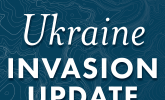April 2, 2022 - ISW Press
Ongoing peace talks will likely protract, though Russia and Ukraine may have reached initial agreements on Ukrainian “neutrality.” However, the Kremlin is unlikely to drop its maximalist demands—which are inadmissible to Kyiv—in the near term. Kremlin Spokesperson Dmitry Peskov stated on March 30 that the March 29 negotiations in Istanbul on March 30 did not result in "anything too promising or any breakthroughs.” Lead Russian negotiator Vladimir Medinsky claimed on March 30 that Ukraine has stated its willingness to meet core Russian demands to end what the Kremlin claims is “the threat of creating a NATO bridgehead on Ukrainian territory” but clarified that only the “essence” of agreements was agreed on. Smaller Russian and Ukrainian delegations arrived in Jerusalem, Israel, on March 30 for further negotiations. Ukrainian and Russian negotiators resumed peace talks virtually on April 1 and Ukrainian Foreign Minister Dmytro Kuleba said that Russia has not yet provided responses to Ukraine’s March 30 proposals. Russian Foreign Minister Sergey Lavrov said that the Kremlin is preparing a response to Ukraine’s March 30 proposals but did not provide a timeline for delivery.











